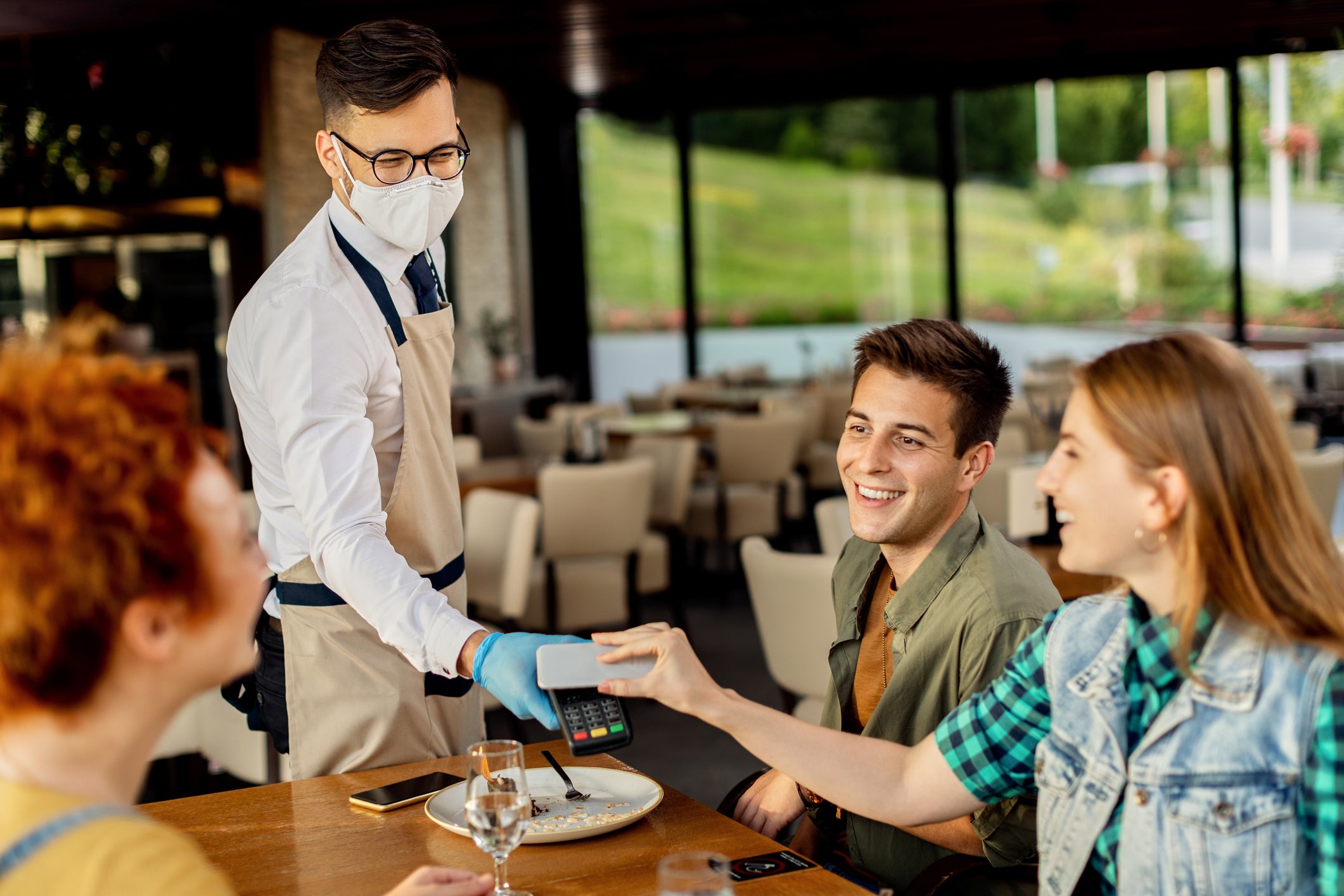Will your money survive the rise and rise of contactless payments?
The limit will more than double to £100 next month. Here’s how to make sure your spending doesn’t do the same

Once upon a time, waving your card at a machine without inputting your pin would part you with a maximum of £10.
By 2012 it was £20 and in 2015 it rose to £30 before hitting £45 in April last year as the pandemic hit.
They were gradual, incremental increases. But next month that all falls by the wayside as the contactless limit more than doubles to £100.
It’s music to the ears of those set to gain from the boost.
Matt Phillips, vice president and head of financial services at Diebold Nixdorf UK&I, which sells self-service transaction systems among other things, says: “The increase to the contactless payment limit emboldens the industry’s commitment to giving consumers choice over how they pay – whether that be by cash, card, wallet or contactless. It ensures that digital progression reflects the needs of the market.
“It represents timely action from the industry after the pandemic heightened appetite for contactless, as customers desired safety and efficiency when shopping. This move will widen the consumer usage of contactless payments while keeping a limit that protects their account. Any move that improves the service for customers, while enabling the digital evolution of the UK banking industry, is a positive step, and a trend that we hope to see continue across the sector.”
But should we be a bit more wary than all that? Maybe, says Laura Suter, head of personal finance at AJ Bell.
“The move is intended to make it easier to shop in store after the pandemic brought with it a surge in people using contactless cards,” she agrees.
Around half of all credit card transactions and two-thirds of all debit card transactions are now contactless, with the number expected to soar from 15 October when larger items, like the weekly shop or filling up with petrol, come within range.
“However, while the move brings more convenience for some it also carries two big warnings,” adds Suter.
Get a free fractional share worth up to £100.
Capital at risk.
Terms and conditions apply.
ADVERTISEMENT
Get a free fractional share worth up to £100.
Capital at risk.
Terms and conditions apply.
ADVERTISEMENT
“First, it is a thief’s dream, as they can take far more of your money in each transaction if your card is lost or stolen. By spending £100 at a pop without having to put in a PIN, it would be very easy for thieves to blitz through money quickly before you even spotted the card had been nicked.
“Second, there is a risk for those who are in debt getting further into debt. The easier a card transaction is the less the consumer is actively thinking about how much they are spending, meaning it’s easier to rack up larger bills on a credit card.
“People should be able to set their own card limits if they want to, either to scupper thieves or for their own financial management.”
There are other ways to resist the lure of the ultra-easy transaction with a bit of behavioural finance insight, says Stacey Lowman, financial coach at the app Claro Money.
“While the increase is certainly convenient, it also means that consumers have less time to ponder their purchase and consider the impact it may have on their finances, potentially leading to an increase in overspending,” she says.
“Paired with busy sales periods such as Black Friday and Christmas shopping, consumers will likely be tempted to spend more on their shopping trips than they can afford.
“Resisting the urge to overspend is important, particularly if you have been struggling with your personal finances throughout the pandemic or are working towards a financial goal. It’s essential to remember that although the contactless payment limit may have changed, that doesn’t mean your budget for a shopping trip needs to or should.”
Ahead of payday, consider the expenses you have for the month and set a budget for both the essential shopping trips like groceries or school supplies and the non-essential purchases like clothes or beauty products, she suggests.
“Then before each shopping trip, whether essential or non-essential, establish the maximum amount you can spend and stick to this. To make sticking to a budget easier, try to identify what items you want to buy in advance and set a limit on your card.
“It is also helpful to consider how much time the money you’re spending is worth. Before you tap your card and pay for a £100 shop, think how long you would have to work for to cover that additional £55 in contactless payments – this puts the value of money into real terms.”
Join our commenting forum
Join thought-provoking conversations, follow other Independent readers and see their replies
Comments
Bookmark popover
Removed from bookmarks